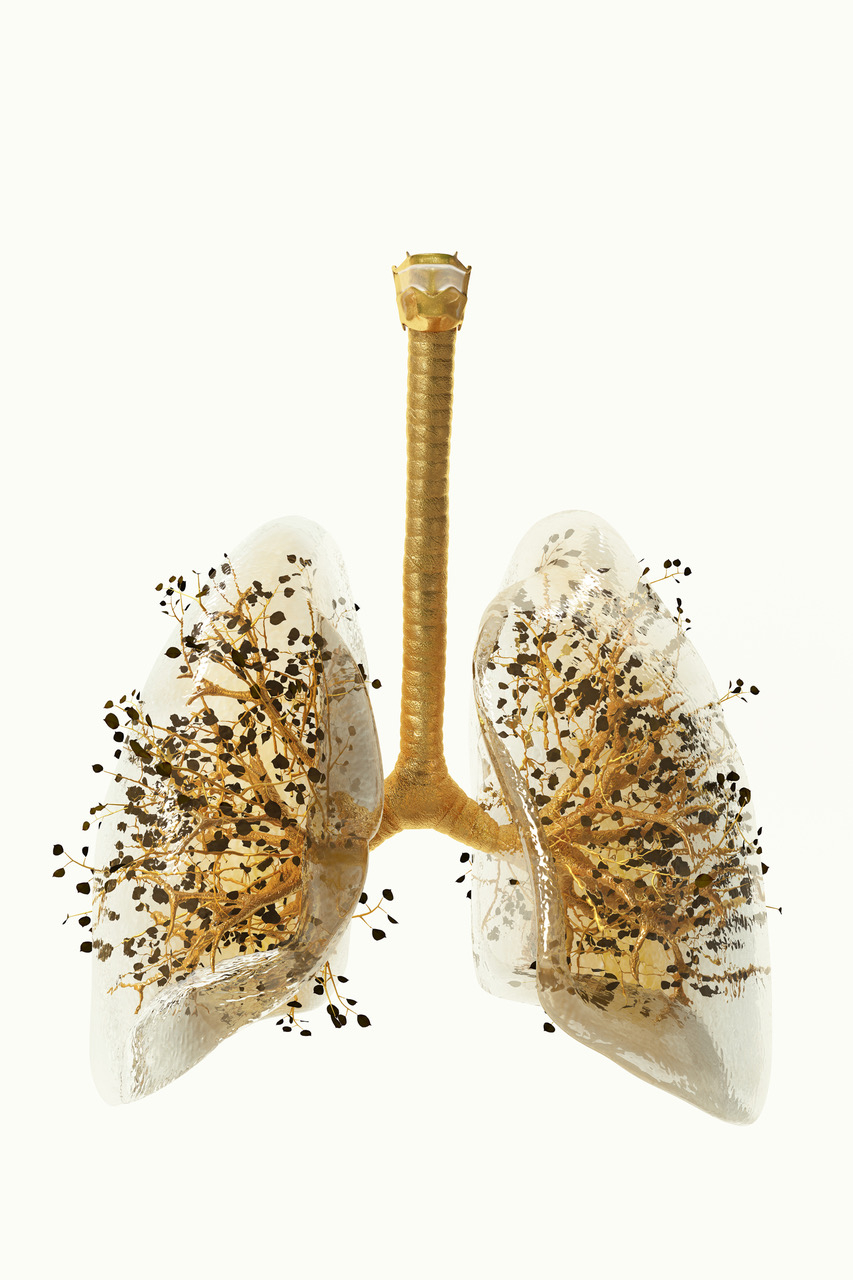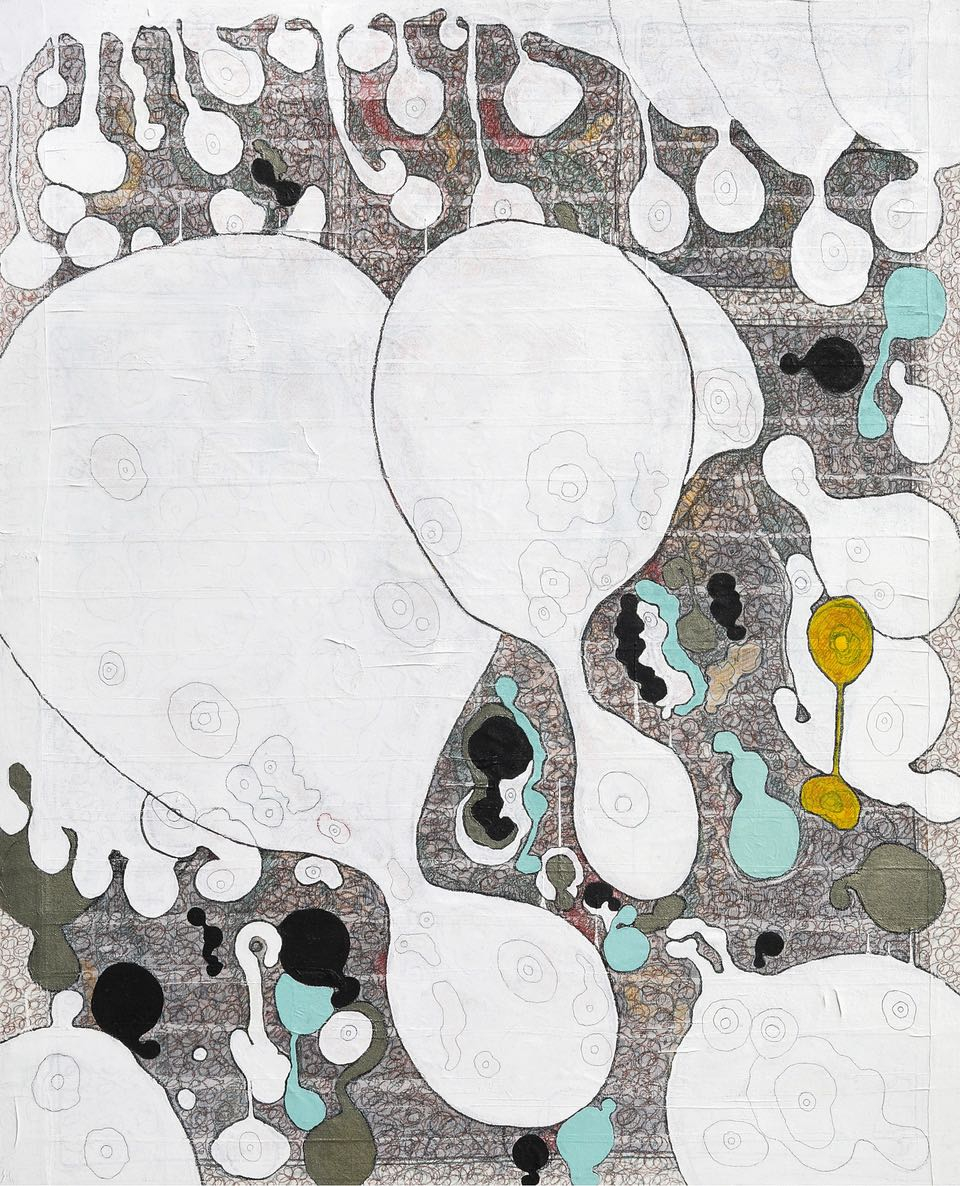
Costas Picadas: Biomes and Homologies
Tenri Cultural Institute
Tenri Cultural Institute Presents Biomes and Homologies: Costas Picadas, an exhibition of large-scale multi-media works on canvas and smaller 3D model, photo-based prints on paper, curated by Dr. Thalia Vrachopoulos. Picadas has created a stunning experimental group of hybrid visual artworks on canvas that blurs the boundaries between painting and drawing-based mixed media process art, making these works indefinable. His compelling daring innovations are unique. He blends the concept of painting, which is invoked by his use of canvas on wooden stretcher bar supports, with the reality of drawing by employing graphic materials such as oil pastels, charcoal and also acrylic.
Picadas is inspired by cells he carefully observes through a microscope, and by large plant forms that grow in outlying areas such as forests. He stresses the likenesses of the natural form he discovers, in order to comprehend their formations more clearly. In the fields of Chemistry and Biology, the dictionary definition of "homology" is "the state of having the same or similar relations, relative position, or structure." "Biome" defines a group or community of animal and plant life that coexist in the same habitat.
These abstract works are populated with multiple groups of ovals that have morphed into a rhythmic language with a quick pulse and throbbing tempo. The pictures are visual counterparts to musical compositions, with harmonies of various repeated beats and movements that draw viewer attention into the realms of muted gold, black and gray organisms. The cells seem to float upward, presumably toward the light. In several pieces the surface is laid over with wide masking tape which establishes richness through layers of "real" material that suggests an elusive unfathomable sense of time. Some of the white circular shapes that dominate several compositions may appear to be in progress. Sometimes the lines in the "Biomes" are loosely overlapped, with stress on the physicality of the materials; in other incidences the lines are drawn in relatively sensitive outlines around the circular forms of burgeoning cells. In a group of gleaming, 3-D Model photo-based print works there are hyper-real gold toned organs interspersed with delicate twigs that sprout small green leaves. The prints, entitled "Knee," "Heart," "Brain" and "Lungs," display an extreme realism that features golden disembodied organs set on a pure white paper ground that sparkle as if alive.

The artist comes from a family of doctors and practitioners who brought their medical knowledge into the home while he was growing up. Picadas applies transparent gauze over some areas of his large formats, symbolically representing the healing process of nature, as a doctor would do to protect a serious recovering wound. Transforming the infinitesimal cellular forms into the macroscopic visual formats allows Picadas to explore deeper relationships, to discover their underlying links that spark meaning and significance. He seems to have a compelling need to explore the intricacies of the cell forms and their variants, in mostly monochromatic compositions that stress color harmonies and neutral tones, especially gray and white. His work accentuates drawing, especially flowing stem-like shoots that stretch and flow among and between the circular shapes they surround. In Biome 3, the subtleties of charcoal establish visual interest where the fine details intermingle in the atmospheric interstices that connect the larger forms and shapes.
Picadas draws beautifully; he has brought this skill to a format that is traditionally used for paintings on canvas. There is an experimental component to Picadas's use of unusual medias in an unconventional format; oil pastels are delicate, but also accessible, which makes them a practicable choice for a direct approach to picture making. The artist has a tremendous affinity for shapes; he creates his homologies and biomes with honesty and emotion, with a commitment to transmitting the configurations of forms he finds under the microscope. He makes discernable changes and corrections that bring the images in the works closer to their true realities instilled with an almost perceptible feeling of movement and flux. Some of his shapes are inspired by the mitosis of cells in which a cell splits into two daughter cells with the same number of chromosomes.

Picadas considers art to be a powerful source of regeneration and sustenance that sparks our curiosity and appreciation for its beauty and complexity. Through links to our source in nature it serves as a reinvigorating element that nurtures the crucial human need for emotional expression. In contemporary global society dominated by technology we are increasingly cut off from a vital link with our organic roots. The artist has used various means to regain this interconnection; he has explored videos with monitors in gallery settings and projections on large buildings to achieve immersive environments. Picadas is convinced that as an artist he not only analyzes the underpinnings of nature, but in so doing he becomes one with the its rhythms in his works.
